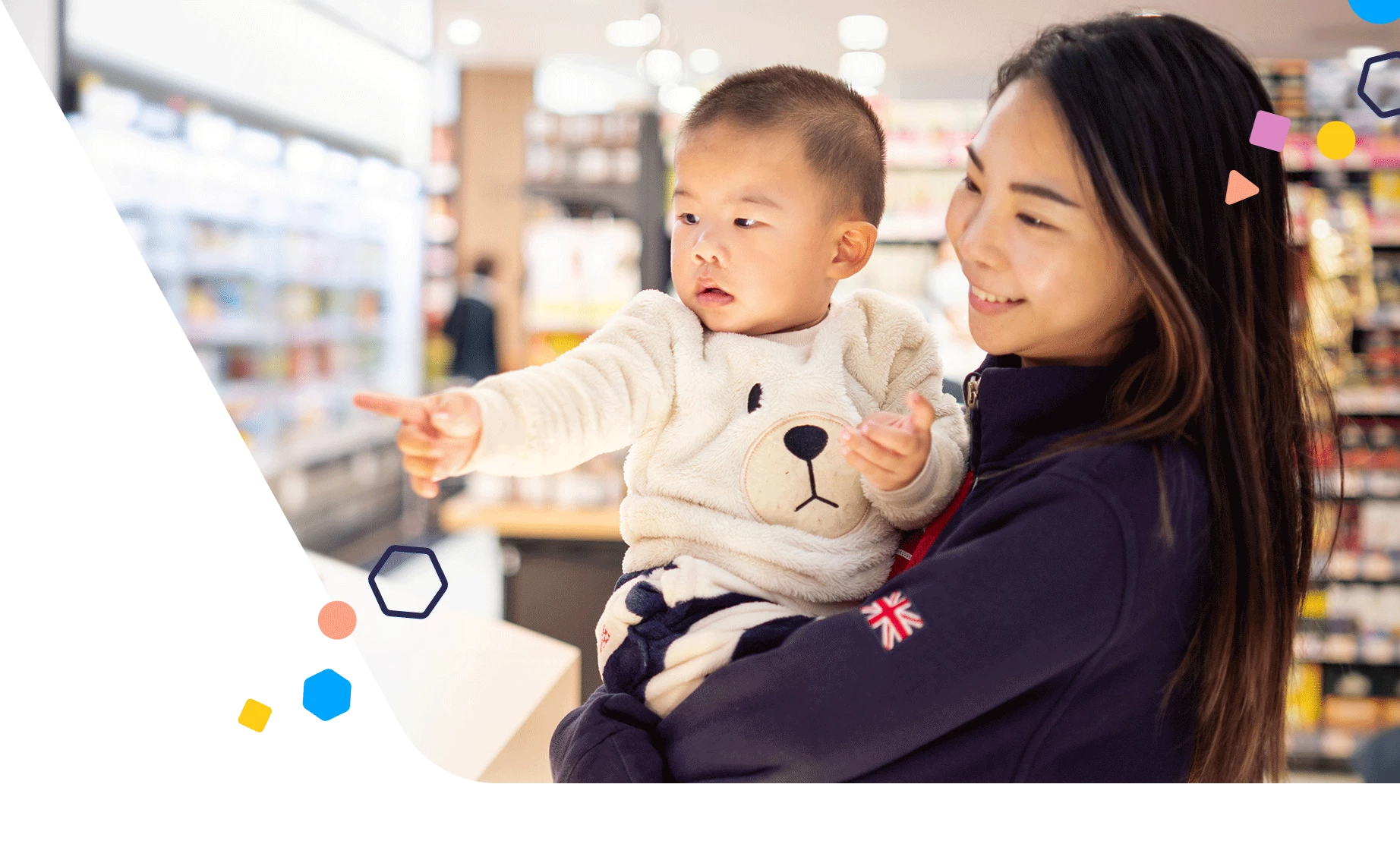Sure, it’s cute to watch your little one wave goodbye, but it’s also an important baby language development. In fact, this one simple action shows they’re learning language. An exciting bit of progress! Babies use gestures to communicate while they’re mastering speech. According to researchers, baby gestures reveal a lot about your child’s language development.
How Baby Gestures Can Indicate Development
A four-year study at the University of Chicago* provided insight into the power of baby gestures. Researchers videotaped children interacting with their mothers and analyzed the spoken and gestural communications of both parents and children.
This study led to two interesting takeaways:
- Using gestures reveals that a child can communicate, understand, and respond to language. Tracking early gestures can potentially serve as a diagnostic tool to identify children at risk for language delay.
- Encouraging children to gesture at an early age can potentially increase the size of their spoken vocabularies by the time they enter school.
Other research has also found that gesturing is part of a child’s earliest language development.
What Baby Gestures Mean for You
Here's how all that baby language development research can help you interact with your baby:
- Watch for Your Baby’s Gestures. Just as you track your baby’s progress in other areas, like sitting up and rolling over, try to pay attention to how your baby uses their hands to communicate. For example, they should be able to point or shake their head by 12 months.
- Use Gestures. Pointing is the first gesture babies develop in their first year. For instance, if you point to your nose and say, “Mama’s nose,” or point to a baby bottle and ask, “What’s that?” they learn to connect the gesture with finding out information.
- Gesturing Is Different Than Signing. Gestures are the spontaneous movements all babies make as part of their development. Signs, as in sign language, are gestures that can be taught to a baby to help them communicate things like “more.” Signing is linked to reducing a baby’s frustration, not earlier language development.
- Talk to Your Baby Often. While gestures are important, talking to your baby helps expose them to words and language from birth. Describe your day. Point out objects. Talk about the meal you’re making. Sing songs. Read. All of these help your cutie learn language.
- Report Concerns. Feel like your baby isn’t using a lot of common gestures at this stage? Concerned about language or hearing? It might be a good idea to consult your baby’s doctor.
While their sweet little gestures are super cute, they’re also super meaningful in terms of baby language development. Who knew? Well, now you! Help your infant communicate even more in the coming months.
*Reported in American Psychologist in 2014


